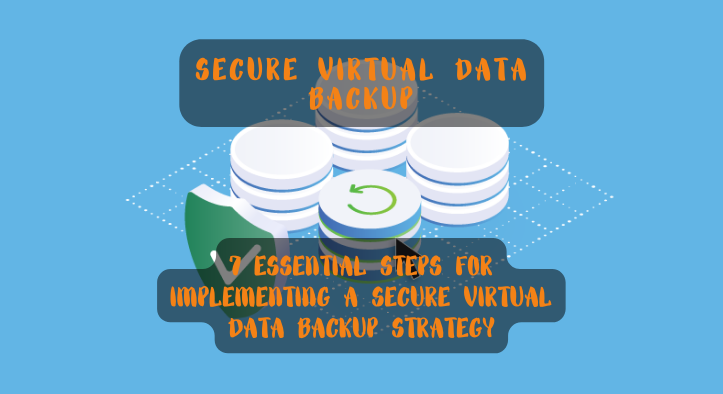7 Essential Steps for Implementing a Secure Virtual Data Backup Strategy

7 Essential Steps for Implementing a Secure Virtual Data Backup Strategy
Data is the lifeblood of any business, and it’s essential to have a secure virtual data backup strategy in place to protect it. With the right strategy, businesses can ensure that their data is safe and secure, even in the event of a disaster. Here are seven essential steps for implementing a secure virtual data backup strategy.
1. Identify Your Data
The first step in implementing a secure virtual data backup strategy is to identify the data that needs to be backed up. This includes all critical data, such as customer information, financial records, and other sensitive information. It’s important to identify all of the data that needs to be backed up, as this will help determine the type of backup solution that is needed.
2. Choose the Right Backup Solution
Once the data has been identified, the next step is to choose the right backup solution. There are a variety of options available, including cloud-based solutions, local storage solutions, and hybrid solutions. It’s important to choose a solution that meets the needs of the business and is secure and reliable.
3. Establish a Backup Schedule
Once the backup solution has been chosen, the next step is to establish a backup schedule. This should include regular backups of all critical data, as well as periodic backups of less critical data. It’s important to ensure that the backups are performed on a regular basis to ensure that the data is always up to date.
4. Test the Backup System
Once the backup system has been established, it’s important to test it to ensure that it is working properly. This includes testing the backup system to ensure that the data is being backed up correctly and that the backups are being performed on a regular basis.
5. Monitor the Backup System
Once the backup system has been tested, it’s important to monitor it to ensure that it is working properly. This includes monitoring the system to ensure that the backups are being performed on a regular basis and that the data is being backed up correctly.
6. Secure the Backup System
Once the backup system has been established and tested, it’s important to secure it to ensure that the data is safe and secure. This includes ensuring that the system is protected from unauthorized access and that the data is encrypted.
7. Review the Backup System
Finally, it’s important to review the backup system on a regular basis to ensure that it is working properly and that the data is secure. This includes reviewing the system to ensure that the backups are being performed on a regular basis and that the data is being backed up correctly.
Conclusion
Implementing a secure virtual data backup strategy is essential for any business. By following these seven essential steps, businesses can ensure that their data is safe and secure, even in the event of a disaster. This includes identifying the data that needs to be backed up, choosing the right backup solution, establishing a backup schedule, testing the backup system, monitoring the backup system, securing the backup system, and reviewing the backup system on a regular basis.

